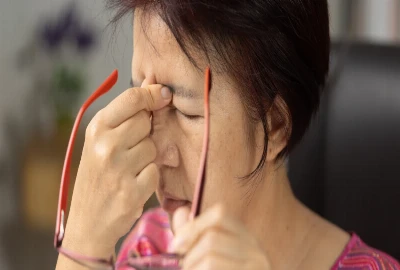Parasocial Burnout: When Followers Demand Too Much from Creators

In today’s hyperconnected world, creators and influencers are more accessible than ever. Fans can comment, message, and watch every part of their daily lives, from morning routines to emotional breakdowns. While this intimacy fuels loyalty and engagement, it also gives rise to a growing phenomenon: parasocial burnout.
Parasocial burnout happens when creators become emotionally exhausted from the one-sided relationships that fans expect to be mutual. Followers seek constant validation, interaction, and access—treating creators not as individuals but as emotional providers. This post explores how parasocial relationships have evolved, the toll they take on creators, and how both audiences and influencers can navigate healthier boundaries in the digital age.
Understanding Parasocial Relationships in the Digital Era

The Origins of Parasocial Interaction
The term “parasocial relationship” was first coined in the 1950s to describe viewers’ emotional attachments to TV personalities. Audiences felt connected to figures who never knew they existed. Fast forward to the social media age, and this dynamic has intensified—now, the illusion of intimacy is interactive, immediate, and constant.
The Modern Creator-Fan Bond
Platforms like YouTube, Instagram, and TikTok blur the line between public and private life. Creators share personal stories, live updates, and vulnerable confessions, fostering a sense of friendship and trust with followers. This perceived closeness, though, remains one-sided: fans feel personally connected, but creators are often engaging with thousands—or millions—at once.
When Connection Becomes Expectation
The problem arises when followers mistake access for entitlement. Fans start demanding constant updates, emotional responses, and even explanations for creators’ personal choices. Over time, this emotional labor becomes draining, leading to what experts now call parasocial burnout.
The Emotional Labor Behind Being “Authentic”

The Pressure to Perform Realness
In the age of “relatable influencers,” authenticity is currency. Creators are expected to be vulnerable, approachable, and available at all times. But performing authenticity is exhausting—it’s a paradox of needing to appear natural while constantly being “on.”
The Cost of Constant Sharing
Sharing personal struggles builds engagement but also opens emotional wounds. When creators reveal their mental health challenges or personal losses, they risk becoming emotional caretakers for fans who project their feelings onto them. What starts as empathy quickly becomes a full-time job in emotional management.
Burnout from Boundless Intimacy
Unlike celebrities with PR teams, digital creators are often alone in managing these relationships. The endless cycle of responding to DMs, comments, and emotional confessions leaves little room for detachment or recovery. Over time, creators begin to feel emotionally depleted—a hallmark of parasocial burnout.
The Audience’s Role in Creator Burnout

The Entitlement Problem
Many followers don’t realize how invasive their expectations can be. Demanding replies, dissecting personal decisions, or expressing outrage when creators take breaks contributes to an unhealthy environment. Fans justify their behavior as “caring,” but it often crosses boundaries into control.
Emotional Dependency in Online Communities
Parasocial relationships offer comfort for viewers seeking connection, especially during loneliness or social isolation. However, this dependency can turn toxic when fans rely on creators for validation or emotional stability, expecting continuous attention in return.
The Cycle of Guilt and Obligation
Creators often feel guilty when they can’t meet these expectations, fearing backlash or follower loss. This guilt leads to over-engagement—posting through exhaustion, replying to every message, and sacrificing privacy—all of which deepen the burnout.
Platform Algorithms and the Economics of Overexposure

Engagement as a Survival Mechanism
Social media algorithms reward consistency, interaction, and visibility. The more a creator posts and engages, the more they’re promoted. This system pushes creators to be always online, blurring personal boundaries in pursuit of growth.
Monetizing Intimacy
Creators often depend on brand deals, sponsorships, and fan donations—all of which hinge on sustained engagement. This turns emotional connection into a transactional relationship, where personal life becomes marketable content.
The Trap of Algorithmic Dependency
Taking a break can lead to a drop in visibility, income, and momentum. Many creators stay active out of fear of becoming irrelevant, even at the cost of their mental health. The algorithm doesn’t care about burnout—it rewards performance, not preservation.
The Mental Health Consequences of Parasocial Burnout

Anxiety and Emotional Exhaustion
The pressure to please an invisible crowd leads to chronic anxiety, insomnia, and creative block. Creators describe feeling “watched” even offline, as if the audience’s gaze never ends. This hyper-awareness can erode mental stability and self-trust.
The Loss of Personal Identity
When creators become their content, personal identity blurs with online persona. Constant feedback reshapes self-perception—what followers praise becomes part of the creator’s sense of self, while criticism cuts deeper than intended.
Depression and Disconnection
Paradoxically, the people most “connected” online often feel the most isolated. When creators can no longer meet audience expectations, they withdraw, leading to depression and disillusionment. The joy of creation fades into obligation.
Setting Boundaries: How Creators Can Protect Their Energy

Reclaiming Privacy
Not every moment needs to be content. Establishing boundaries—such as keeping relationships, routines, or family life offline—helps creators separate self from screen. This distinction allows for genuine rest and renewal.
Communicating Expectations Clearly
Creators can reduce misunderstandings by setting communication guidelines. Whether through pinned posts, Q&A disclaimers, or periodic “offline” announcements, transparency helps recalibrate audience expectations without alienating fans.
Building Sustainable Support Systems
Professional support—like managers, therapists, or digital well-being coaches—can help creators navigate the emotional toll of online life. Joining peer communities of other influencers can also provide perspective and solidarity.
Rethinking the Future of Creator-Fan Relationships

The Rise of Digital Boundaries
A cultural shift is beginning: more creators are openly discussing burnout, therapy, and online boundaries. Fans are slowly learning that “connection” doesn’t mean constant access—and that respecting distance is part of healthy fandom.
Platforms Promoting Creator Well-Being
Some platforms are experimenting with wellness tools—like screen-time reminders, content breaks, and moderation support—to protect mental health. While imperfect, these efforts signal growing recognition of the burnout crisis.
Redefining Intimacy in Digital Culture
The future of online relationships may hinge on redefining what intimacy means. True connection doesn’t come from endless access—it comes from empathy, respect, and understanding that creators are human beings, not emotional vending machines.



